
With supermarkets selling a fabulous array of good quality jams and preserves in just about every flavour imaginable, many people now feel as though it’s no longer necessary to go to the efforts of making jams yourself. Well, they’re right. It’s not necessary – but that doesn’t mean that it’s not a good idea because it is! It’s a lot of fun; it’s a great skill to develop, and it’s also a a good way to use up large quantities of fruit. Furthermore you can have great fun creating lots of unusual flavour combinations. Jams with a touch of heat, a bit of tartness, a splash of booze or a pinch of herbs or spices really get those taste buds tingling and taste so much more exciting. And let’s face it , anything that’s homemade always tastes better than the shop bought stuff!
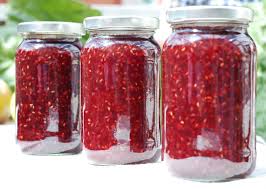
Although this post is going to focus more on making jams, I’m just going to take a little time out to explain the differences between jams, jellies, marmalades, preserves, conserves etc. You may think that ‘jelly’ is just the American word for ‘jam’ (generally it is!) and that they all look the same when poured into a jar or spread on a piece of toast , but regardless of supermarket labelling or people’s preferred terminology, technically they are actually a little different.
JAM:
Jam is a thick mixture of fruit, pectin, and sugar that is boiled gently but quickly until the fruit is soft and pulpy. It thickens to a spreadable consistency and can easily form a blob. In addition to being a spread, jams are also good to use as fillings for cakes, pies, puddings and biscuits .
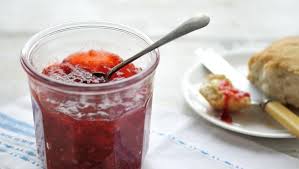
JELLY:
Not to be confused with dessert jelly which contains gelatine or aga aga, preserve jelly is made from sugar, pectin, acid, and fruit JUICE – just the juice from the fruit and not the actual fruit itself, unlike jam. It’s translucent and more gelatinous than jam and is firm enough to hold its shape. Jellies can also be made from ingredients other than fruit, such as herbs, flowers, and vegetables.

MARMALADE:
A citrus spread made from the peel and pulp of citrus fruits such as lemons, oranges and grapefruit. Marmalades are cooked for a long time and have no pectin, and are used as spreads and glazes.

PRESERVE:
These are spreads that are very similar to jams (in fact the two terms are often used interchangeably) and have chunks of fruit surrounded by jelly.
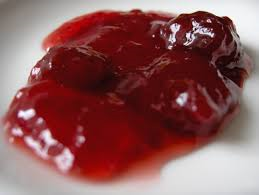
CONSERVE:
Conserves are made with dried fruits and nuts and are cooked. They tend to have a thicker, chunkier texture than most other types of preserve. Conserves can be used as a spread and also as a condiment for cold meats.
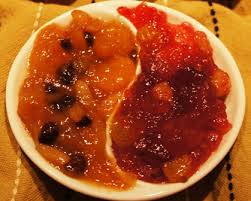
FRUIT BUTTER:
Nothing to do with dairy products, fruit butters do not have a jelly-type appearance like their other fruity counterparts. Instead the fruit pulp is cooked with sugar for a longer period of time to create a denser texture.
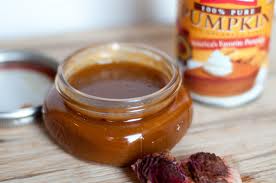
FRUIT SPREAD:
A jam or preserve made without sugar.
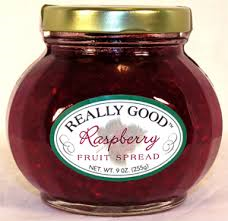
FRUIT CURD:
A spread usually made using cirrus fruits, raspberries, or my favourite, passion fruit. The basic ingredients are beaten egg yolks, sugar, fruit juice and zest, and sometimes butter. These ingredients are gently cooked together until thick and forming a soft, smooth, flavourful spread, which can also be used in cakes and desserts – most notably, lemon meringue pie.
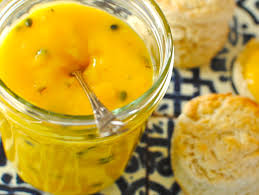
Now that you’ve got a better understanding of different types of jarred spreadable goodies, let’s take a look at a few jam making basics:
- The perfect fruit to use for making jam is fruit that is just ripe. Avoid overripe fruit and never use mouldy fruit.
- Pectin, a natural fruit sugar, is the secret of a good set. Lemon juice, jam sugar (with added pectin) pectin powder or liquid can all be used to achieve the perfect set.
- Pectin-rich fruit (redcurrants, plums etc) can be added in small quantities whereas low-pectin fruits (raspberries, strawberries etc.) are added in large quantities.
- Warm the sugar before using it so that it dissolves faster.
- Jars and lids should be washed and sterilised before using them.
- To reduce the risk of condensation and prevent mould, fill the jars as much as possible and put the lids on while the jam is still hot.
- Label and date jars.
- Store in a cool, dark place.
- Refrigerate once opened.
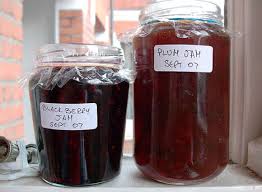
SETTING POINT:
Jams are usually boiled to 105ºC but the ‘wrinkle test’ is an extra check to make sure that the setting point has been reached. To achieve this you need to:
- Put a couple of saucers in the freezer before you begin to make the jam.
- When the jam reaches 105ºC remove the pan from the heat to prevent overcooking it.
- Spoon a little of the jam onto the cold saucer.
- Leave the jam for a few minutes then touch it with your fingertip.
- If it wrinkles, the jam is ready.
- If it doesn’t wrinkle, cook it again for a little longer before doing another test.
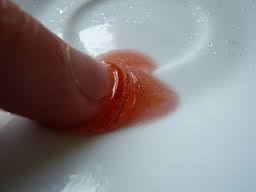
START JAMMING!
Three recipes for jams including a delicious chilli jam that can be served with chicken, fish or shellfish. For a list of jam making equipment, click here.
BLACKBERRY AND PEAR JAM

INGREDIENTS:
Juice of 1 lemon
1kg blackberries
1kg pears, peeled and cored
1kg jam sugar
METHOD:
- Pour the lemon juice into a large pan and add the fruit.
- Place the pan over a low heat and stir until the juice starts to come out of the blackberries.
- Increase the heat and bring to the boil, then reduce the heat and simmer gently for 30-45mins.
- Stir occasionally until the fruits are very tender.
- remove the pan from the heat.
- Mash the fruits and push through a strainer to remove the seeds.
- Pour the fruit purée back into the cleaned pan and add the sugar.
- Place the pan over a low heat and stir until the sugar dissolves.
- Bring the mixture to the boil, then boil it rapidly for about 5-10mins or until it reaches 105ºC.
- Remove the pan from the heat and test that it’s reached setting point.
- If not boil for 1-2mins longer and retest; repeat until setting point is achieved.
- Leave the jam to cool for 20-30mins then pour into warm. sterilised jars.
- Place wax discs against the surface of the jam and leave to cool completely.
- Cover the jars and label.
- The jam may be stored in a cool, dry, dark place for up to 6 months.
- Once opened, store the jars in the fridge.
SWEET CHILLI JAM

INGREDIENTS:
100-150g red chillies, tops cut off
2 red peppers, deseeded and roughly chopped
500ml bottle white wine vinegar
1kg jam sugar
METHOD:
- Place chillies and peppers in a food processor and whizz until finally chopped.
- Pour vinegar into a pan and add the sugar.
- Stir over a low heat until the sugar dissolves.
- Add chilli and pepper mixture and bring to boiling point.
- Boil the mixture for 10-15mins until it reaches 105ºC.
- Turn off the heat and test for the setting point.
- Once the jam has reached setting point, leave it to cool for 20-30mins.
- Pour into warm sterilised jars.
- Place a wax disc on top and leave to cool.
- Cover the jars and store in a cool, dry, dark place for up to 3 months.
- Once opened keep the jam in the fridge.
PLUM JAM
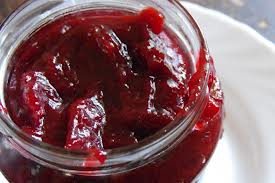
INGREDIENTS:
1kg plums, stoned and roughly chopped
1kg jam sugar
Knob of butter
METHOD:
- Pour 300ml water into a pan and add the plums.
- Put the pan on the hob and bring to the boil.
- Reduce the heat and simmer for about 30 mins or until the plums are tender.
- Remove the pan from the heat and add the sugar; stir until the sugar dissolves.
- return the pan to the heat and bring to the boil; boil rapidly until it reaches 105ºC .
- stir occasionally so that it doesn’t catch on the base of the pan.
- Remove from heat and test setting point.
- If the jam doesn’t wrinkle, boil it for longer, testing every 2 mins.
- When the jam has reached setting point, skim off any scum and stir in butter to disperse any remaining scum.
- leave jam to cool for 20-30mins then pour into warm, sterilised jars.
- Place wax discs on top.
- Leave to cool, then cover with lid or cellophane.
- Label and store in a cool, dry, dark place for up to 6 months.
All recipes by Sue McMahon from Woman’s Weekly.

Looks great. Thanks for the link back.
LikeLike
Thank you and you’re welcome. You have an awesome blog and I look forward to more posts!
LikeLike
Wow so nice to make fresh jams at home…. love chilli jams….yummmm
LikeLike
So do I! I’m planning on making a batch.
LikeLiked by 1 person